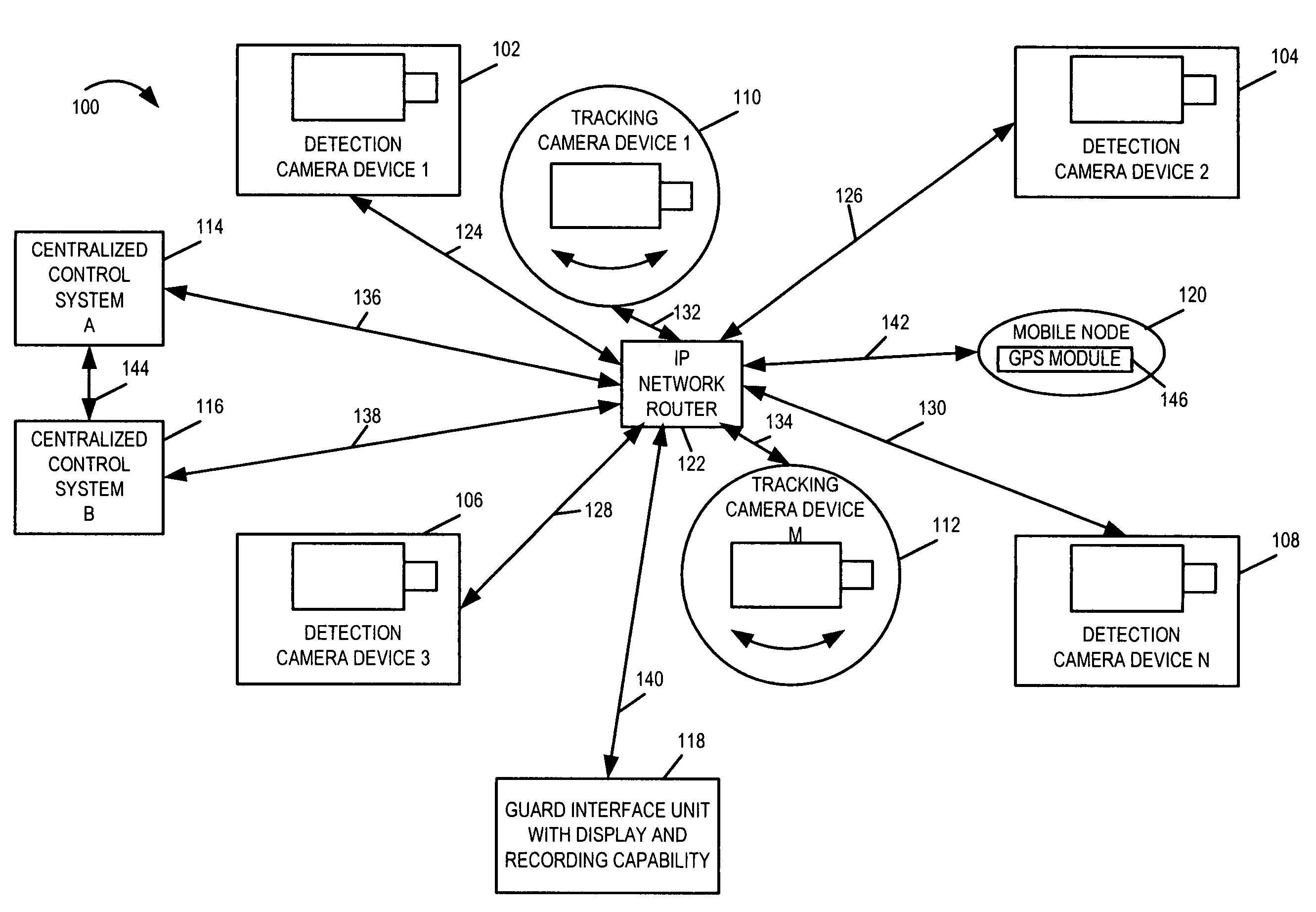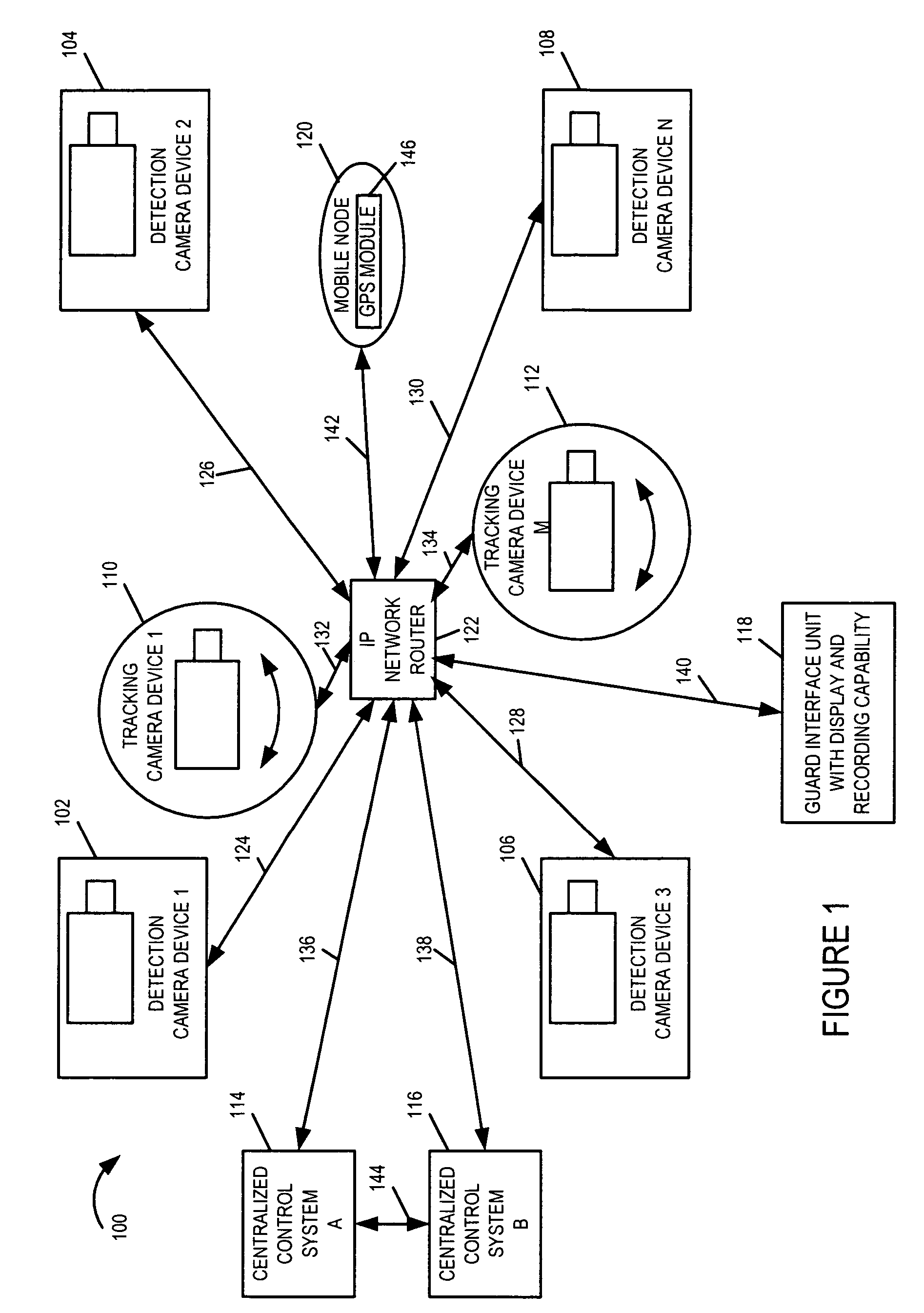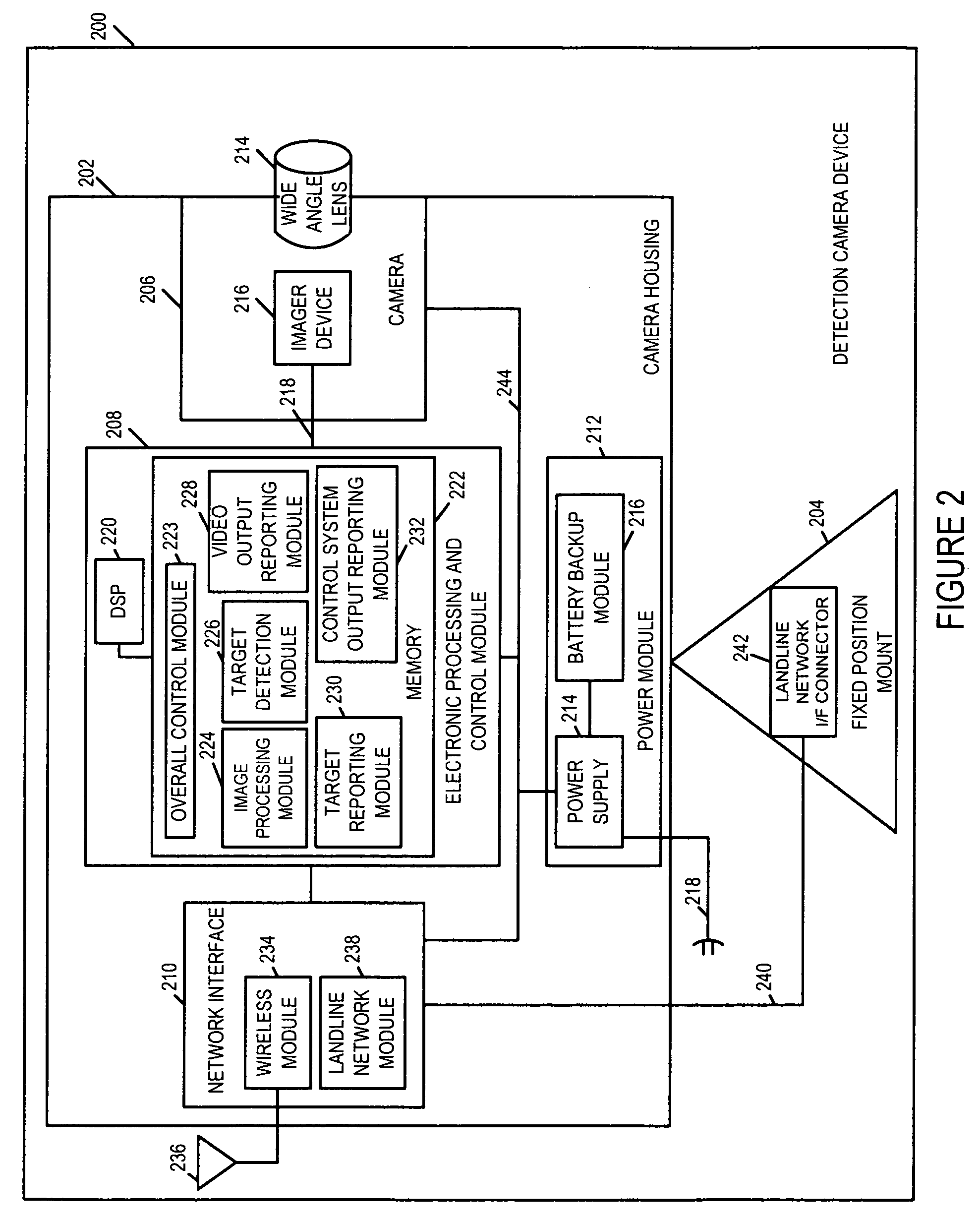Methods and apparatus for a wide area coordinated surveillance system
a surveillance system and wide area technology, applied in the field of surveillance systems and methods, can solve the problems of insufficient reliability of the approach to achieve a high level of security, tendency to nap or fall asleep, and inability to accurately fix the position, etc., to achieve the effect of simplifying the calibration complexity, and avoiding the formation of a large surveillance area
- Summary
- Abstract
- Description
- Claims
- Application Information
AI Technical Summary
Benefits of technology
Problems solved by technology
Method used
Image
Examples
Embodiment Construction
[0034]FIG. 1 is a drawing of an exemplary automated threat detection and tracking system 100 implemented in accordance with the present invention and using methods of the present invention. Exemplary system 100 includes a plurality of detection camera devices (detection camera device 1102, detection camera device 2104, detection camera device 3106, detection camera device N 108), a plurality of tracking camera devices (tracking camera device 1110, tracking camera device M 112), two centralized control systems (centralized control system A 114, centralized control system B 116), a guard interface unit 118, a mobile node 120, and an IP network router 122. The various devices (102, 104, 106, 108, 110, 112, 114, 116, 118, 120) are coupled to IP network router 122 via communication links (124, 126, 128, 130, 132, 134, 136, 138, 140, 142), respectively, allowing the various devices to communicate with one another and interchange data / information.
[0035] Exemplary system 100 is an integrat...
PUM
 Login to View More
Login to View More Abstract
Description
Claims
Application Information
 Login to View More
Login to View More - R&D
- Intellectual Property
- Life Sciences
- Materials
- Tech Scout
- Unparalleled Data Quality
- Higher Quality Content
- 60% Fewer Hallucinations
Browse by: Latest US Patents, China's latest patents, Technical Efficacy Thesaurus, Application Domain, Technology Topic, Popular Technical Reports.
© 2025 PatSnap. All rights reserved.Legal|Privacy policy|Modern Slavery Act Transparency Statement|Sitemap|About US| Contact US: help@patsnap.com



